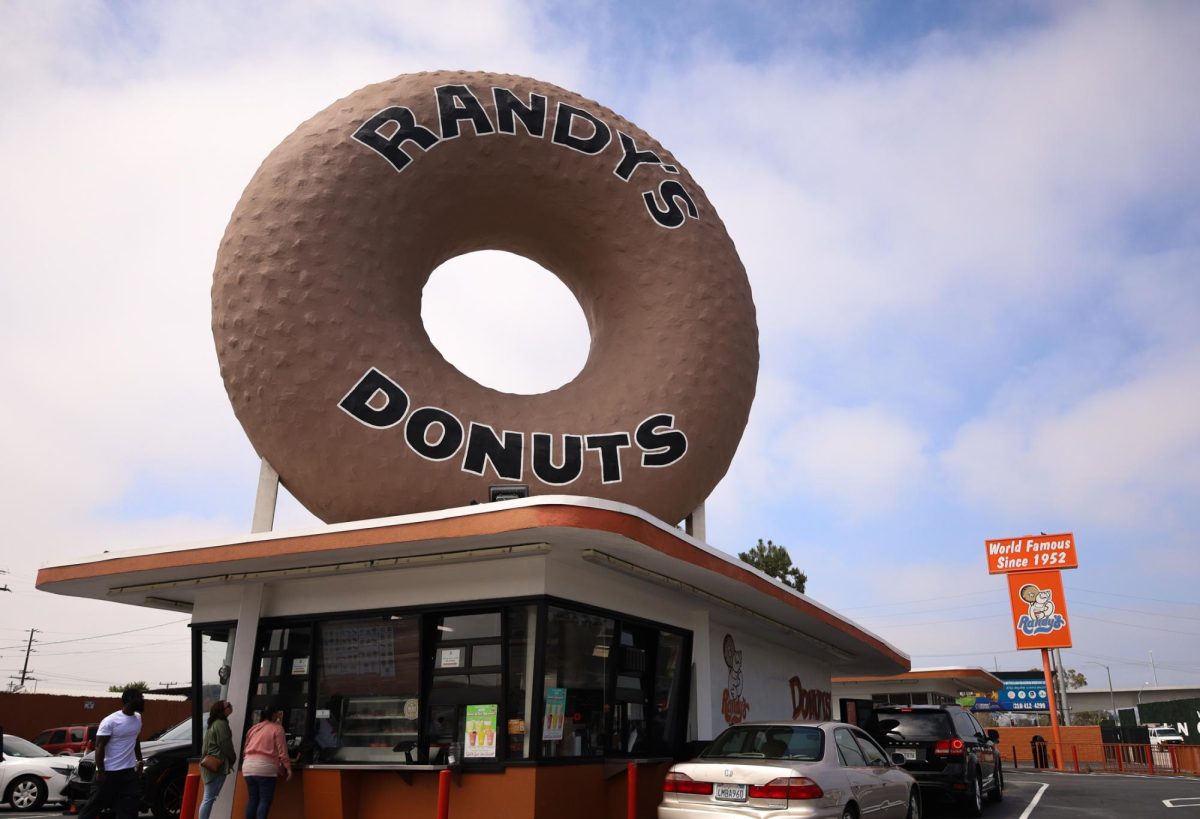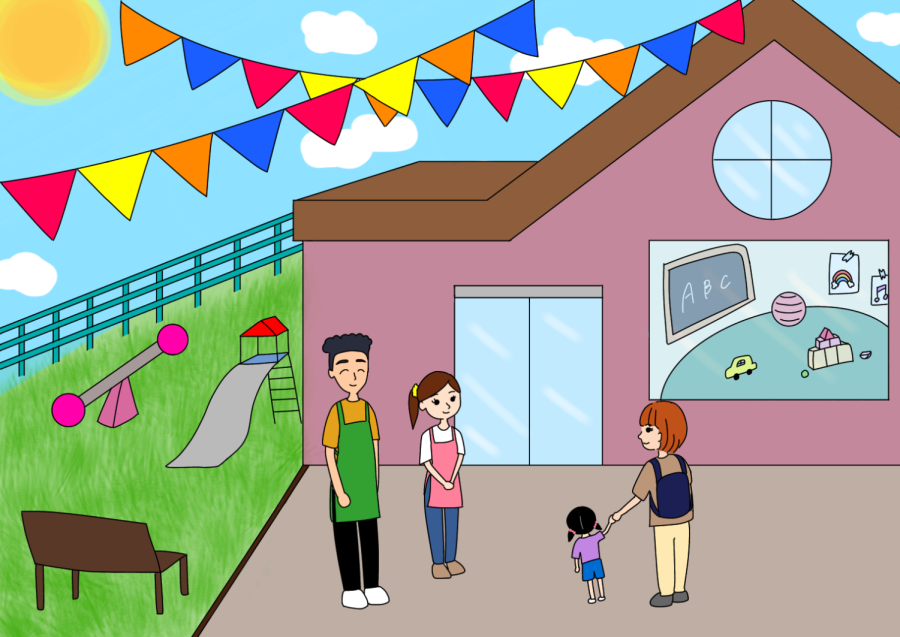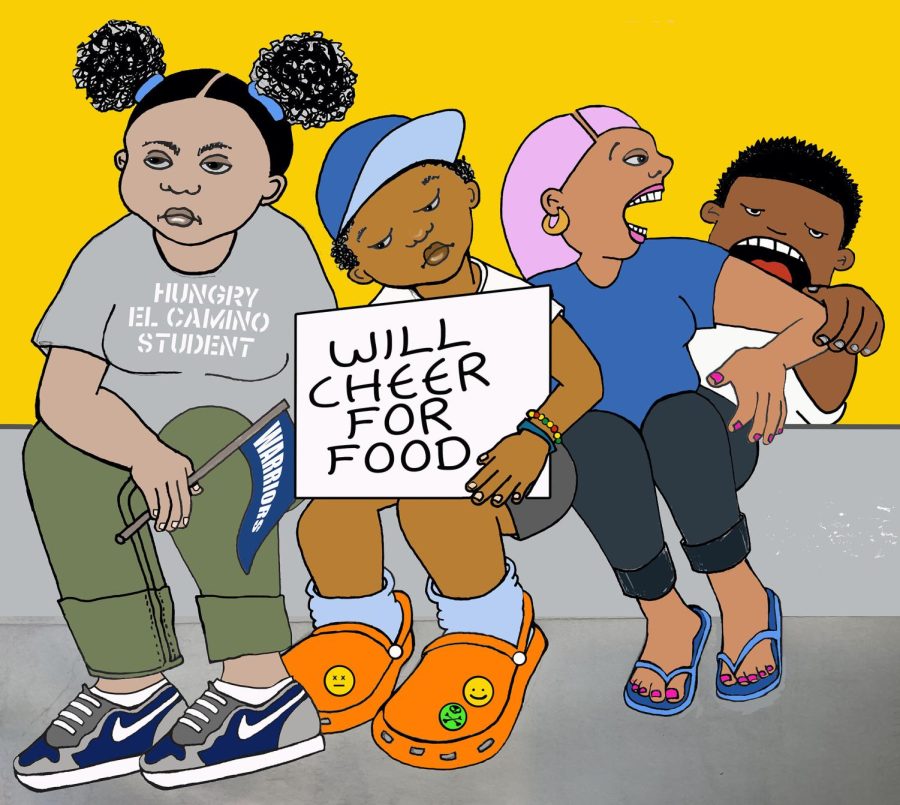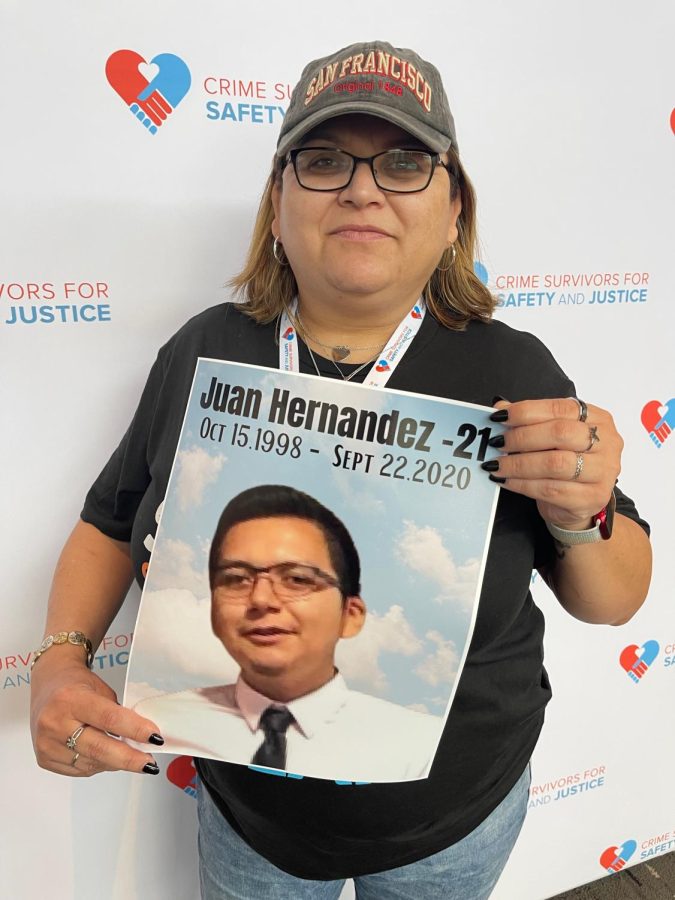With raised eyebrows, Medusa looks to her bottom-left while her parted lips appear as if frozen in a state of shock. Her face, as well as the coiling snakes on top of her head, may make her appear as though she were once alive.
Like other artworks on display in the Schauerman Library, she is part of the “Art Saves: ECC Faculty and Staff Exhibit,” which will be on display from Aug. 8 to Sept. 30. This exhibit will showcase the artwork of staff and faculty members who may be least expected as artists.
“Art saves the soul,” Ed Martinez, public access librarian, said. “Sometimes the soul of the campus needs to be refined.”
Martinez said people on campus become so focused on their own dicipline and often do not think outside of their own dicipline.
“A lot of departments here don’t know each other and so this exhibit is to bring the campus together,” Dwight Ueda, photographer and coordinator of the exhibit, said. “I helped facilitate the gathering of these people.”
During the exhibit reception, he said he was surprised by the number of faculty and staff members who participated.
Ueda said the idea of this event was to have people bring their friends and meet other individuals through the exhibit.
Martinez said another purpose of the exhibit is to uncover the “hidden talent” of faculty and staff members on campus.
“Do not assume that you know everything about everyone,” Martinez said. “There is a hidden talent among everyone.”
Aside from possibly exhibiting artwork that could bring the campus together and uncover hidden talent, the exhibit may have also been a way for artists to express their emotions or ideas of how they view the world.
“The community colleges are going to get cut by November’s tax initiative,” Brian Krause, special resource center program coordinator, said.
Although Krause may be unaware about how the tax initiative will effect community colleges, he mentioned a number of topics that may be considered a concern among students, staff and faculty members.
“ There’s a definite concern for jobs, security, and he (Ueda) is trying to get people to talk through art.”
Although Krause may be concerned by the tax initiative, Krause’s photo, “Painted Sunset,” a photo printed on aluminum of palm-tree sihlouettes against an orange-yellow sky, may demonstrate otherwise.
Next to this photo, sits “Silhouette Soulmates,” a photo with silhouettes of Krause and his wife, Kendra during their honeymoon in Maui, Hawaii.
“I call it a mini-vacation,” Krause said. “I want to have someone look at my photos and say ‘I want to go on a vacation.”
Across from these photos, sits the greenish-brown bust of Medusa, a ceramic made from Long Beach clay, black mountain snakes with gerstley borate and glaze.
“It is a white clay based bust of me in fear of snakes coming out of my head,” Nancy Currey, ESL instructor, said.
She said she had done research on Medusa to find that she was the target of jealousy for Athena, the Greek goddess of wisdom and warfare.
“Whatever is ugly about you is reflected in Medusa,” Currey said. “It is comedic. She is the icon of rage. My modern image is that fear and rage are closely intertwined.”
Currey said she liked the idea of relating her artwork with mythical stories. She said she hopes this exhibit as well as her artwork will inspire people to see things differently or create their own art.
“None of them (faculty and staff who participated in the exhibit) are fine arts faculty and are not professionally in the field,” Martinez said. “They do their art as a hobby and not as a profession.”
Martinez said although Ueda did help gather artists together for this exhibition, he has no photos on display. He said because Ueda is a photographer, it may be the reason why there are a lot of photos at the exhibit.
“I took a workshop at the special resource center with Brian (Kraus),” Berenice Cabrilo, 36, business major, said. “The first time I saw the photos at his office, I was surprised.”
Cabrilo said Krause invited her to the exhibit to check out his photography. She said what she liked the most about Krause’s photos were the fact that they were not Photo-shopped.
While these photos were not Photo-shopped, they may be considered a form of “hidden talent” that even Ueda may have viewed as a representative of the purpose of the exhibit.
“I would really like to give credit to the people who showed their art,” Ueda said.







